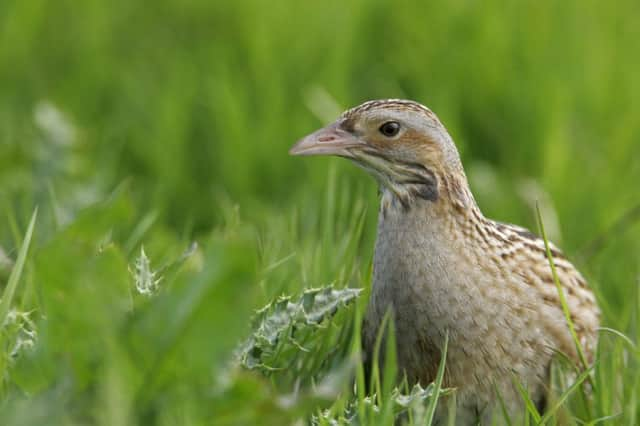Dramatic decline in one of Scotland’s rarest birds


Only 870 male corncrakes, identified by their distinctive call, were counted in key areas for the species this year – down from 897 last year and a high of 1,282 in 2014.
Although numbers in the Outer Hebrides and Orkney have increased overall since 2018, this has been offset by declines elsewhere, including the Inner Hebrides, over the same period.
Advertisement
Hide AdAdvertisement
Hide AdConservationists say increased efforts are urgently needed to save the corncrake from extinction.
They say persistently low numbers recorded over the past five years prove the species is struggling, with its long-term survival as a breeding bird in Scotland under threat.
Corncrakes were once found across the UK but changes in agricultural practices in the 19th and 20th centuries saw numbers crash and their range shrink to just a few places – mainly on crofts and farmland in the Scottish islands and around the north-west coast.
The introduction of agri-environment schemes – where farmers and crofters are paid to ensure there is good habitat for the birds – in the early 1990s helped numbers increase but even at a high in 2014 the species has remained vulnerable.
Wildlife charity RSPB Scotland believes the continuation of such support for Scotland’s farmers and crofters is vital to ensure the corncrake’s survival in Scotland, as well as benefitting other species.
“The ‘crex crex’ call of a male corncrake used to be one of the sounds of summer across the UK and it’s vital that it is not lost altogether from here,” said Chris Bailey, advisory manager at RSPB Scotland.
“This year’s results highlight the essential support agricultural communities on Scottish islands provide to this rare and secretive bird by managing their land in a corncrake-friendly way – they are the stronghold for this species and the support they receive must continue over the long term if we’re to have a real chance at ensuring corncrakes continue to breed in Scotland every summer.”
Corncrakes are related to moorhens and coots but differ from most of the family in that they live on dry land.
Advertisement
Hide AdAdvertisement
Hide AdThey are relatively small – only slightly bigger than a blackbird – and very secretive, spending most of their time hidden in tall vegetation.
Their presence is only betrayed by the male’s distinctive rasping call.
The species is a summer visitor to the UK, coming here to nest before migrating to Africa for winter.